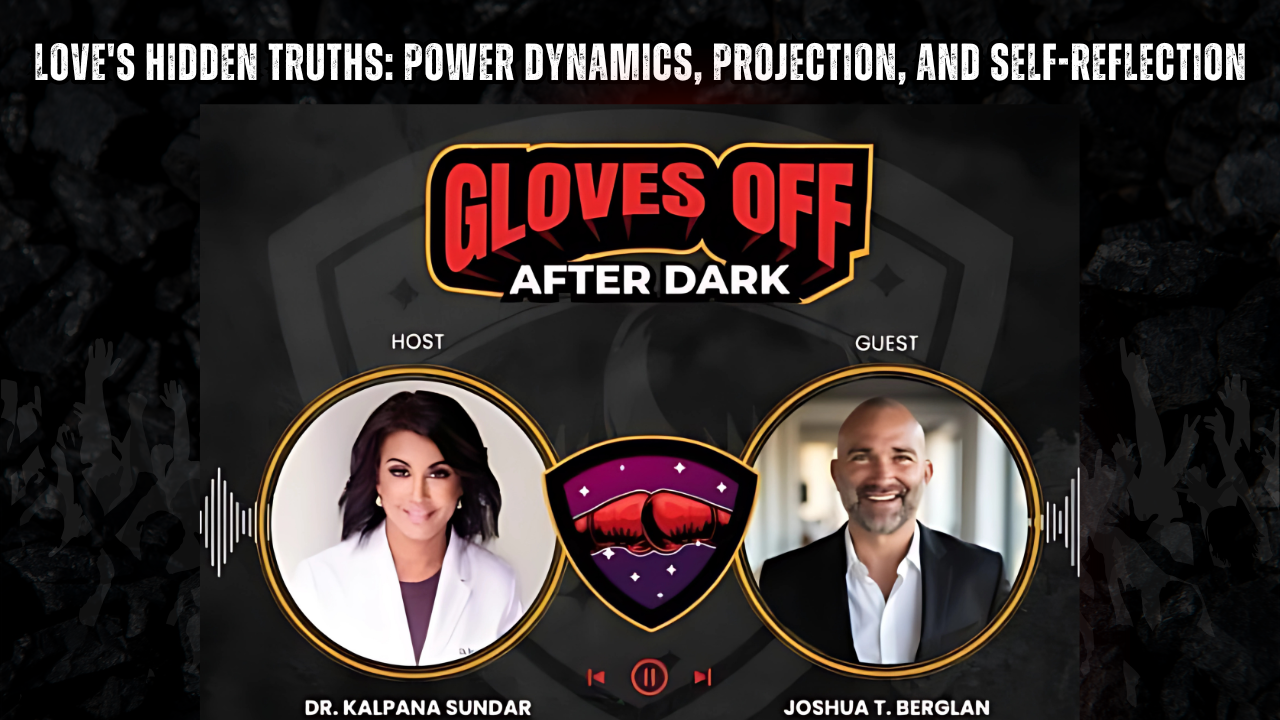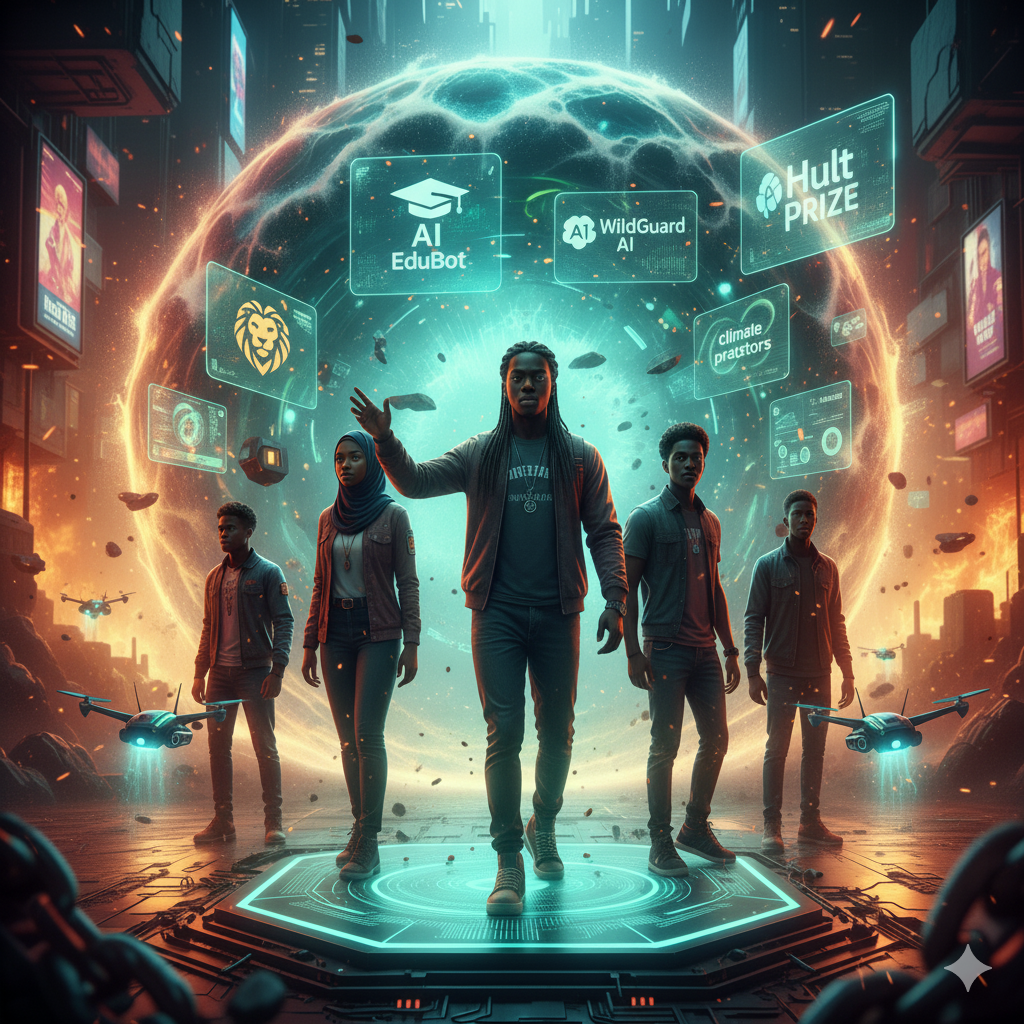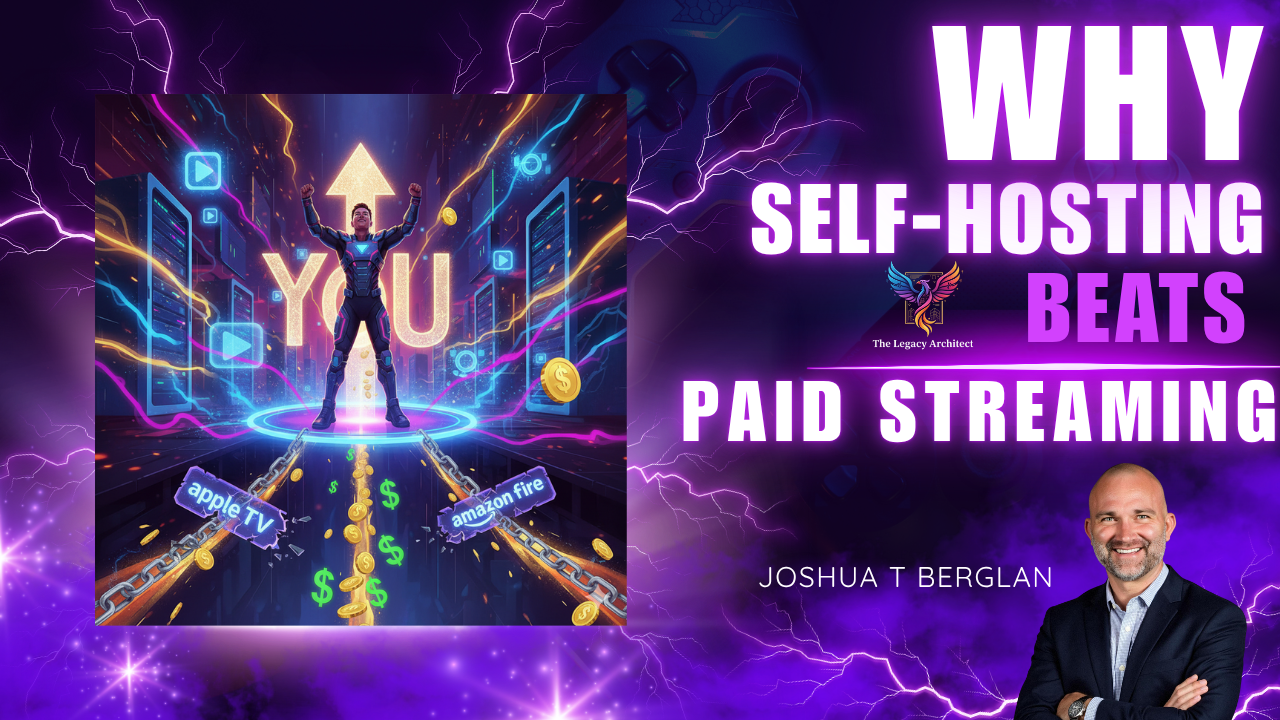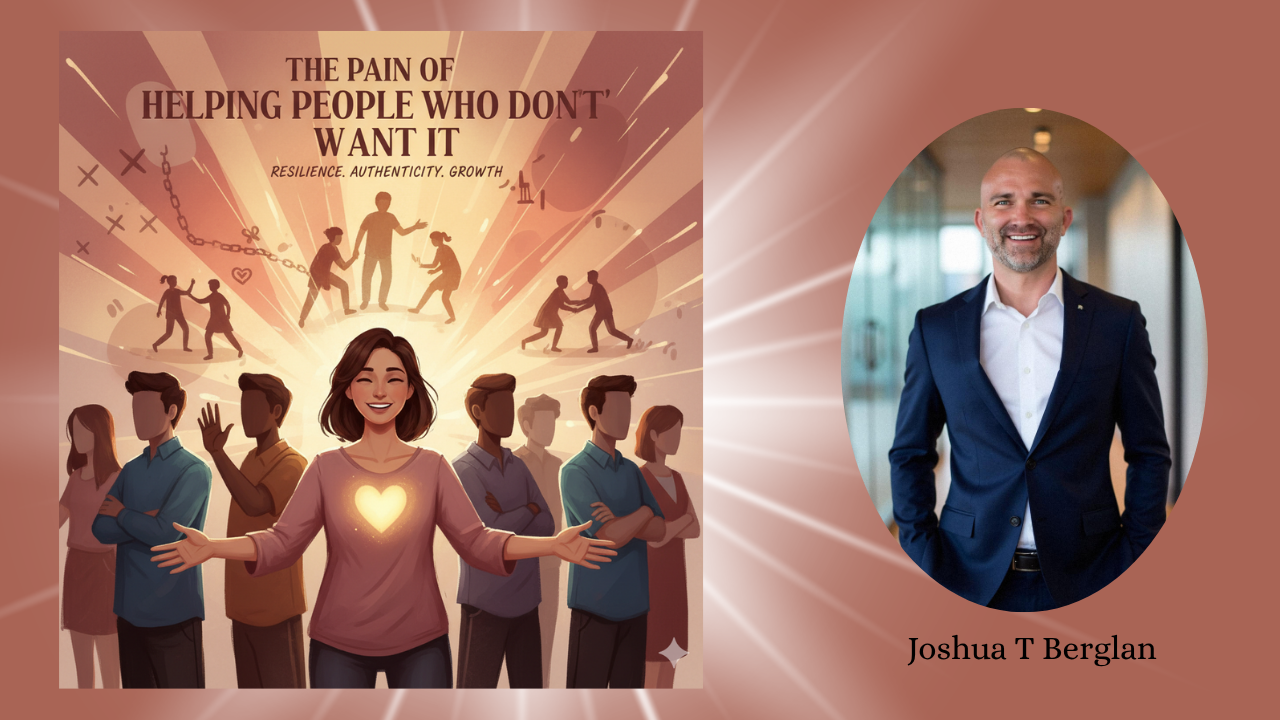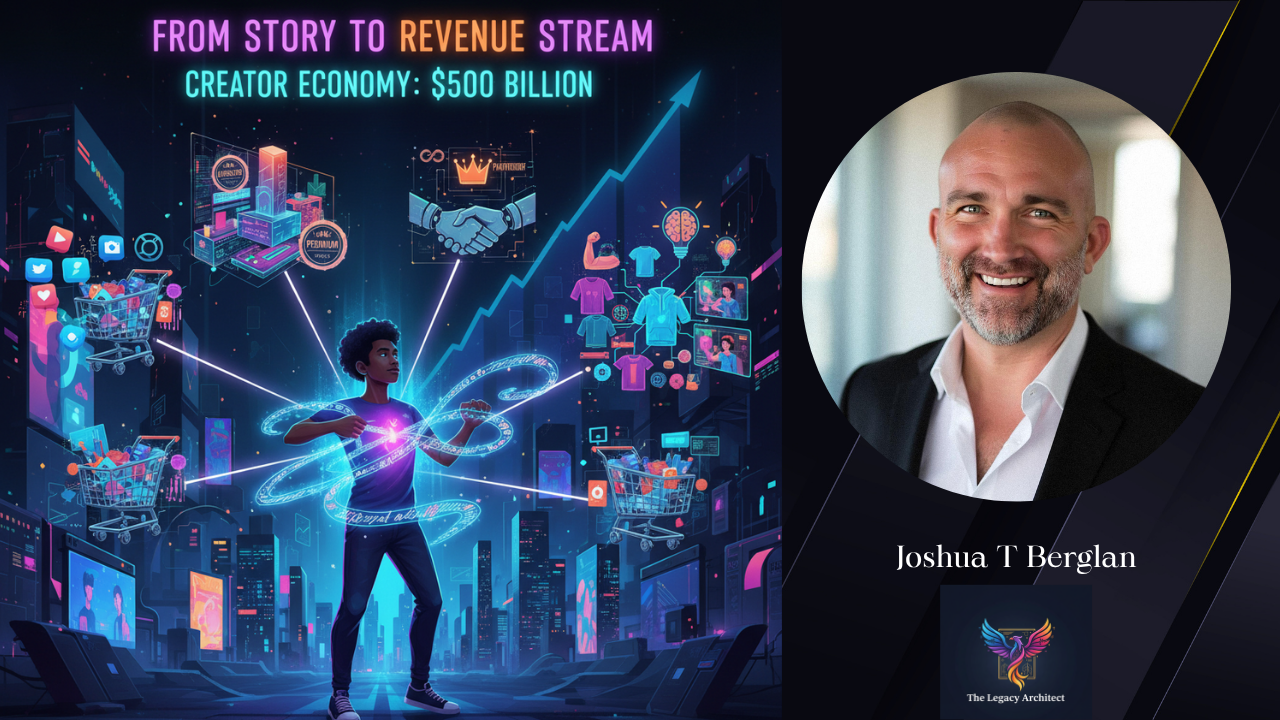
The Legacy Architect Dispatch
An exclusive from The World's Mayor Experience, published by The Legacy Architect, Joshua T. Berglan.
Your source for transformative content that dives deep into personal growth, authentic branding, and overcoming adversity. Explore powerful insights on storytelling, mental resilience, and building a meaningful legacy in the a digital age, curated to educate, inform, and inspire your journey.
Survey Note: Detailed Analysis of the "Internet of Everything" Course
Internet of Everything Course Breakdown
Key Points
- The course "Engineering Tripos Part IIB, 4B27: Internet of Everything" at the University of Cambridge explores advanced connectivity concepts, including the Internet of Things (IoT) and Internet of Everything (IoE).
- It seems likely that IoE extends Io-ResIoT by connecting devices, people, data, and processes, with potential applications in healthcare, agriculture, and smart cities.
- Research suggests IoE faces challenges like connectivity, energy efficiency, and security, with ongoing efforts to address them through tools like simulation software.
- The evidence leans toward IoBNT (Internet of Bio-Nano Things) revolutionizing medicine with smart drug delivery and health monitoring, though biocompatibility and privacy remain concerns.
- This course prepares students for future careers in cutting-edge fields, potentially impacting global technological innovation.
Course Overview
The "Engineering Tripos Part IIB, 4B27: Internet of Everything" is a specialized course offered by the University of Cambridge for the 2023-24 academic year, led by Prof O B Akan. It focuses on the Internet of Everything (IoE), an advanced concept that builds on the Internet of Things (IoT) by connecting not just devices but also people, data, and processes. The course is assessed entirely through coursework, emphasizing practical application and research, and is part of the Lent term.
Key Concepts and Applications
IoE is about creating a network where everything is interconnected, potentially leading to smarter cities, efficient industries, and personalized healthcare. The course covers:
- IoE Basics: Understanding how IoE differs from IoT, with challenges like ensuring connectivity and energy efficiency.
- Commercial Applications: Exploring specialized areas like the Internet of Vehicles (IoV) and Internet of Energy (IoEn).
- Internet of Bio-Nano Things (IoBNT): Focusing on nanoscale devices for applications like smart drug delivery and environmental monitoring.
- Bio-cyber Interfaces: Technologies like brain-machine interfaces that connect biological systems with electronics.
- Molecular Communications: A new way for nanoscale devices to communicate using molecules, useful inside the body or in space.
These technologies could transform healthcare with personalized medicine, optimize agriculture, and enhance environmental monitoring, though challenges like security and interoperability need addressing.
Educational Impact
The course prepares students for careers in biotechnology, nanotechnology, and telecommunications by teaching them to analyze, simulate, and research these systems, potentially driving global innovation.
Survey Note: Detailed Analysis of the "Internet of Everything" Course
The following is a comprehensive analysis of the course outline for "Engineering Tripos Part IIB, 4B27: Internet of Everything" offered by the University of Cambridge for the 2023-24 academic year, as detailed on the course webpage ( Course Page ). This note aims to break down the content, make it digestible for a global audience, and offer potential solutions and informative insights, reflecting the course's significance in technological innovation.
Course Structure and Leadership
The course is led by Prof O B Akan, with contact details provided (oba21@cam.ac.uk), and is delivered by the same lecturer. It is scheduled for the Lent term, comprising 16 timetabled lecture slots, which include both lectures and dedicated coursework time. The assessment is 100% coursework-based, emphasizing practical application over traditional examinations. For examination guidelines, refer to the university's policy page ( Examination Guidelines ).
The course was last modified on May 30, 2023, at 15:26, indicating its relevance for the 2023-24 academic year, though it remains a valuable resource for understanding current research trends as of June 25, 2025.
Aims and Objectives
The course aims to introduce the history and definition of IoT and IoE, outlining their relation and differences. It emphasizes the challenges of IoE, such as ubiquitous connectivity, energy efficiency, miniaturization, and interoperability. A significant focus is on the Internet of Bio-Nano Things (IoBNT), exploring its role, applications (e.g., smart drug delivery, continuous health monitoring, smart agriculture), technologies, and challenges.
Objectives include understanding IoT and IoE concepts, conducting technological investigations in IoBNT fields (e.g., molecular communications, bio-cyber interfaces), and becoming familiar with tools for addressing IoBNT challenges. Students are expected to perform communication theoretical analysis and simulations of molecular nanonetworks and explore practical implementation tools.
Detailed Content Breakdown
The content is divided into several key areas, each with allocated lecture slots:
- Internet of Everything (2 Lectures):
- Covers the universe as a natural IoE, key components (people, things, data, processes), and a comparison between IoT and IoE. Challenges include connectivity, bandwidth, energy efficiency, miniaturization, application-driven networking, and interoperability, with a focus on universal transceivers.
- Current Practice in Commercial IoXs (1 Lecture):
- Provides an overview and applications of various Internet of X (IoX) concepts, such as Industrial Internet of Things (IIoT), Internet of Animals and Things (IoAT), Internet of Energy (IoEn), Internet of Vehicles (IoV), Internet of Materials (IoM), Internet of Space (IoSp), and Internet of Digital Twins/Metaverse. This highlights the commercial applicability of IoE in diverse sectors.
- Internet of Bio-Nano Things (IoBNT) (3 Lectures):
- Introduces the IoBNT framework, architecture, and components, including nanobiosensors, nano-stimulators, engineered cell-based BNT designs, and functional biomolecules. Applications span medical (e.g., organ-on-a-chip), smart agriculture, biocomputing, food safety, and environmental monitoring. Nanoscale communication methods and challenges like co-existence, biocompatibility, energy harvesting, privacy, and security are discussed.
- Bio-cyber Interfaces for IoBNT (2 Lectures):
- Focuses on brain-machine interfaces, bioelectronics, micro/nanoscale neural interfaces, and wearable bio-cyber interfaces. Enabling technologies include organic electrochemical transistors, electrophoretic drug delivery, and biosensing, facilitating integration between biological and electronic systems.
- Molecular Communications (MC) (4 Lectures):
- Explores MC-based natural IoBNT systems (e.g., nervous, hormonal nanonetworks, immune system, gut-brain axis, cancer metastasis, bacterial, plant, odour transduction), and artificial MC (e.g., diffusion-based, microfluidic, FRET-based, DNA-based, lab-on-chip/organ-on-a-chip, human-body, bacteria-mediated, olfactory). It covers communication techniques (modulation, coding, synchronization, detection, channel estimation), modeling and analysis (information/communication theoretical, analytical/numerical approaches), simulation tools (N4Sim, NanoNS, AcCoRD, nanoNS3), transmitter/receiver architectures (nanomaterial-based, biosynthetic), and practical testbeds (microfluidic, magnetic nanoparticle-based, light-responsive bacteria-based).
Coursework and Learning Activities
The coursework comprises two main activities:
- Activity 1: Stochastic Simulations of Molecular Communications using Smoldyn
- Students analyze propagation delay, diffusion noise, and binding noise, experimenting with MC modulation and detection techniques. Learning objectives include understanding MC models, particle-based spatial simulation, implementing modulation/detection, and evaluating ICT performance metrics.
- Activity 2: From IoX to IoE (Research Report, max 8 pages)
- Students choose an IoX (e.g., IoV, IoEn), study it with a layered architecture, identify roles of Xs, data, processes, investigate communication channels/transmitter/receiver, analyze energy characteristics, describe its role in IoE, and identify interaction pathways with other IoXs. They discuss applications and interoperability challenges, with optional analytical/numerical/simulation analyses using tools like Smoldyn for MC or MATLAB. Learning objectives include identifying IoX applications, mapping architectures, analyzing interactions, mapping onto IoE, and identifying open challenges.
Digestible Explanation for a Global Audience
For a global audience, the course can be understood as an exploration of how everything—devices, people, data, and processes—can be connected in a vast network, known as the Internet of Everything (IoE). This extends the familiar Internet of Things (IoT), which connects physical devices like smartphones and sensors, by including human interactions and data flows.
Key concepts include:
- IoE Basics: IoE aims to create a world where smart cities, efficient industries, and personalized healthcare are possible through universal connectivity. Challenges like ensuring devices work together (interoperability) and using minimal energy are central.
- Commercial Applications: The course looks at specialized areas like connecting vehicles (IoV) or energy systems (IoEn), showing how industries can benefit from IoE.
- Internet of Bio-Nano Things (IoBNT): This is about connecting tiny devices, like nanobiosensors, to biological systems. Imagine a pill that releases medicine only when needed or sensors that monitor plant health in real-time. Applications include healthcare (smart drug delivery, continuous health monitoring), agriculture (optimizing crop growth), and environmental monitoring (detecting pollutants).
- Bio-cyber Interfaces: These are technologies that let machines talk to our bodies, like brain-machine interfaces for controlling prosthetics or wearables that track health metrics.
- Molecular Communications: A new way for nanoscale devices to communicate using molecules, like how cells in our body talk to each other. This is crucial for devices working inside the body or in space, where traditional Wi-Fi doesn’t work.
The coursework involves simulations and research reports, helping students understand how to design and analyze these systems, preparing them for future careers in cutting-edge fields.
Potential Solutions and Informative Insights
The technologies covered offer potential solutions to global challenges:
- Healthcare: IoBNT can enable personalized medicine, where drugs are delivered precisely, improving treatment outcomes. Continuous health monitoring through wearables or implants can detect diseases early, potentially saving lives.
- Agriculture: Smart agriculture using IoBNT can optimize resource use, reduce pesticide application, and increase food production, addressing food security in a growing global population.
- Environmental Monitoring: IoBNT can help detect pollution levels, monitor biodiversity, and manage natural resources, contributing to sustainability efforts.
- Communication: Molecular communications could enable secure and efficient communication in environments where traditional methods fail, such as inside the human body or in space, enhancing medical and space exploration capabilities.
Challenges like connectivity, energy efficiency, and security are being addressed through research, with tools like Smoldyn for simulating molecular communications and practical testbeds for testing IoBNT systems. For individuals, understanding IoE can help appreciate how technology is becoming more integrated into daily life, from smart homes to personalized health devices, and support for research can accelerate these benefits.
Educational and Career Implications
This course is at the forefront of technological education, preparing students for careers in biotechnology, nanotechnology, and telecommunications. Through lectures, simulations, and research, students gain skills in analyzing, designing, and simulating complex systems, positioning them to contribute to global innovation. For policymakers, awareness of IoE and IoBNT can inform regulations on technology use, ensuring ethical development and deployment, especially concerning privacy and security.
Summary Table of Key Components and Challenges
| Component | Description | Key Challenges |
|---|---|---|
| Internet of Everything (IoE) | Network connecting devices, people, data, processes for seamless communication. | Connectivity, energy efficiency, interoperability |
| Internet of Bio-Nano Things (IoBNT) | Connects nanoscale devices to biological systems for medical, agricultural use. | Biocompatibility, energy harvesting, privacy |
| Bio-cyber Interfaces | Technologies linking biological systems with electronics, e.g., brain-machine interfaces. | Integration, security, ethical concerns |
| Molecular Communications | Communication using molecules, useful at nanoscale or inside body. | Modeling, simulation, practical implementation |
This table summarizes the core areas and their associated challenges, reflecting the course's focus on addressing complex technological issues.
Conclusion
The "Internet of Everything" course at Cambridge is a comprehensive exploration of how connectivity can extend to every aspect of life, from macroscopic systems to nanoscale interactions. It highlights the potential for technological innovation to address global challenges, while acknowledging the need for ongoing research to overcome technical hurdles. For a global audience, it underscores the transformative impact of IoE and related technologies, encouraging awareness and support for their development.
Key Citations



